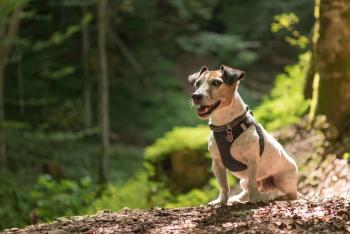
Drought having minimal effect on DVMs - so far
Atlanta - The Southeast's worst drought in more than a century seems to have caused few problems so far for veterinary hospitals, other than some browned-out lawns.
ATLANTA — The Southeast's worst drought in more than a century seems to have caused few problems so far for veterinary hospitals, other than some browned-out lawns.
But if the lack of rainfall continues, some fear the situation could get much worse for residents and businesses.
About 26 percent of the Southeast is under what the National Weather Service terms an "exceptional" drought, the result of more than 16 months of minimal rainfall in an area that normally gets abundant rain from tropical storms and hurricanes.
The Atlanta area is in the drought's epicenter. Its water supply — man-made Lake Lanier 45 miles to the north — has dropped about 14 feet below normal.
"There's a restriction on outdoor watering and people are trying to conserve in other ways, but so far it hasn't affected our operations very much if at all," says Dr. Nicholas Petty, senior partner at the Pharr Road Animal Hospital just north of downtown Atlanta.
"Still, if you ask me about this again in a couple of months, I might have something much different to say."
"We haven't had much of a problem so far, except for the fact that my front yard's gone — all browned-out," says practitioner Henry E. Bohn, at the East Cobb Veterinary Clinic in Marietta, where the city has asked residents and businesses to cut back water use by 10 percent.
"All outdoor water use is banned," Bohn says. "If things were to get a lot worse, we veterinarians, who use water for cleaning and bathing animals, dental procedures and so on, would be affected."
Veterinarians' biggest concern at the moment seems to be medical issues relating to a decrease in the supply and quality of hay for horses.
"The Southeast is heavily dependent on Coastal Bermuda hay as a local and reasonably priced hay. But with reduced cuttings, the quality is diminished and the supply is short. People are having to ship in hay at two to four times their regular hay budget. And some of that is poor quality," Dr. Michelle Henry Barton, a large-animal internist and professor at the University of Georgia's College of Veterinary Medicine in Athens, Ga., tells DVM Newsmagazine.
"For example, a large number of horses in Georgia were exposed to hay from outside the state that was contaminated with hoary alyssum.
"There are strict outdoor watering restrictions, so bathing a horse with city water, for example, is banned. But providing water to livestock hasn't been restricted. But if already-low lakes, streams and creeks that some depend on are not replenished, we will be in a serious crisis," Barton says. "With reduced hay quality and potentially less future access to drinking water, I envision more cases of malnutrition, dehydration and gastrointestinal disease."
Sand colic is another potential problem, says Dr. Ken Marcella, who operates Chattahoochee Equine Clinic in Canton, Ga. "With grasses of poorer quality, horses graze closer and sand can get into the intestinal tract."
He agrees with Barton that, as winter approaches, the cost and quality of hay is the chief concern in drought-stricken areas.
As for water supplies for those who don't have wells, "the good news is we might be through the worst of it now," Marcella says. "Horses drink 10 to 20 gallons a day during summer, but that drops to about five gallons a day in winter."
Newsletter
From exam room tips to practice management insights, get trusted veterinary news delivered straight to your inbox—subscribe to dvm360.





